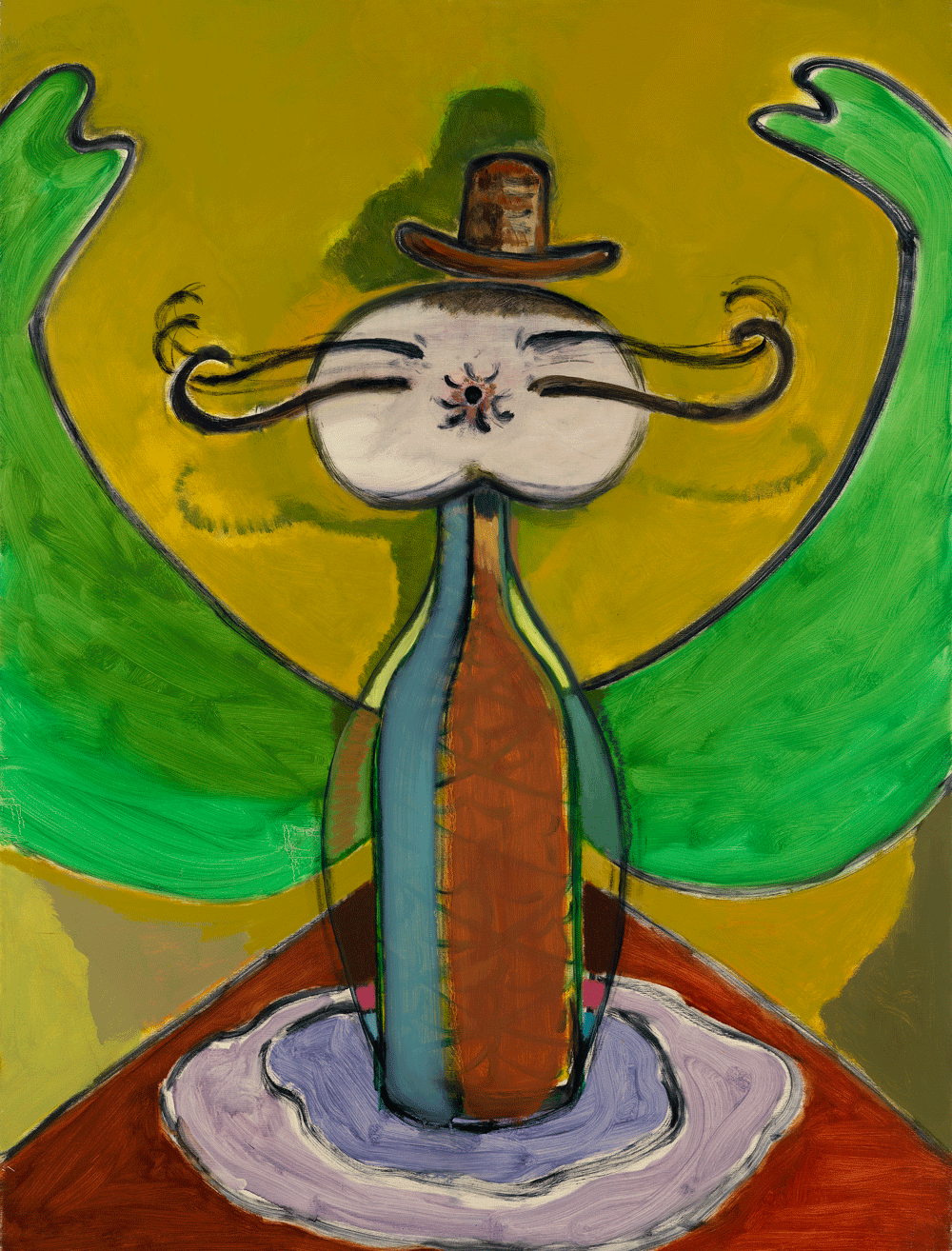Ansel Krut
Modern Art, London, UK
Modern Art, London, UK

In Armchair and Bottles (all works 2009), for instance, a shopping bag of wine bottles seems to have been emptied onto a flesh-toned chair. As with all of the South African-born artist’s boldly constructed paintings, shapes are delineated by thick black lines – borrowed, in all their expressive range, from comic-strip imagery via Georges Braque, late-period Picasso and Philip Guston. Strangely, the bottles appear to float, their shadows further complicating the mish-mash of tone and form, but, just as the image threatens to collapse into chaos, it adheres into a human body splayed out on the chair. The way in which all these elements hover in space gives the impression that the entire still life has been thrown into the air, and is pictured at the exact moment before it crashes to earth. Nearby, a brown bowler hat has lifted off the head of the figure in Citizen Bottle, a levitation that implies a cartoonish attitude of prim astonishment rather than boozy disorder. Perhaps the figure has caught sight of his reflection in the mirror, noticing that, below his raffish moustache, is a puckering pink anus. Although his body – another empty wine bottle – has no limbs to speak of, what looks like a pair of green wings sweeps up behind him, framing his arse–face like a pirouetting ballerina’s raised arms.
Debasement is the order of the day for most of Krut’s characters, though the possibility of them taking flight is also often dangled by the artist like a carrot on a string. Origami Aviator describes a kite–man whose body is made of brightly coloured triangles, but whose wings, like those in Citizen Bottle, look inadequate for actual elevation. Characters in Krut’s universe, it seems, are beset by frustrated ambition and unrealistic self-images. Perhaps the least successful painting in the exhibition describes this world in more direct terms: three empty escalators float in space, grinding impotently towards three divergent vanishing points. In its unpopulated state, however, the image tends towards the decorative; as Bergson reminds us, objects in themselves aren’t funny.
While Krut does not shy from pattern or decoration, he rarely uses them needlessly. He is a superb colourist and handles thin washes of oil paint with a delicacy that seems almost to compensate for other indignities that his characters suffer. The limbs of Vortex Man are four multi-hued vortices that convene on a pinpoint torso; the figure’s physical emptiness is not at the expense of aesthetic richness. Elsewhere a colourful vortex–head is seen smoking a pipe – a motif that, like the vortex and the moustache, recurs throughout the show. These devices seem to adhere to an image of maximum pretension, of a pointless expenditure of energy, of smoke without fire – all of which Krut abhors. The title of this latter work – Giants of Modernism #1 (Vortex Head with Pipe) – hints that his scepticism might extend not only to his forebears but perhaps to the entire field of artistic endeavour.
If there is a critique of early Modernist painting within Krut’s work, it is a fond and good-humoured one, the breadth and accuracy of his stylistic quotations suggesting that he has paid diligent attention to the lessons of his masters, and has taken more than he has rejected. Half a Smiling Onion places the eponymous vegetable against a tapestry of polygons that Wassily Kandinsky or Paul Klee would have been proud to put their names to. As if mightily pleased with himself, the onion grins from ear to ear, baring a row of thick white teeth, seemingly oblivious that we are not laughing with him but at him.

























